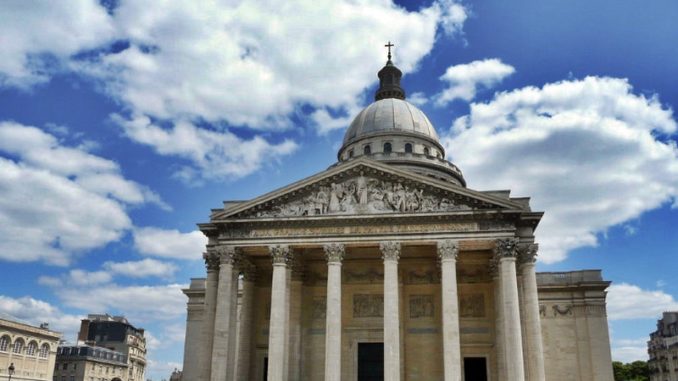
The Pantheon – Entry Fee (Tickets) and Hours
- The Pantheon in Paris is open 10 AM to 6.30 PM, seven days a week. It remains closed on the 25th December, 1st January, and the 1st
- The ticket price for adults ranges between 7 to 9 Euros. Ticket prices for groups of 20 people or more is 7 Euros. Ticket price for schools is 30 Euros.
Facts about the Pantheon (Paris)
The Panthéon is a grand 19th century structure situated on Montagne Sainte-Geneviève’s 5th arrondissement, in the Latin Quarter in the city of Paris, France. The Latin/Greek meaning of the word Pantheon is ‘a temple to all the gods.’ The building offers magnificent views of all of Paris.
The Pantheon was originally constructed as a church in honor of St. Genevieve and to be a resting place for the reliquary châsse that had her remains. It however underwent many functional changes over the years and is currently a secular mausoleum that houses the interred bodies of several well-known French citizens.
The monument was designed by Jacques-Germain Soufflot who wanted to mix the brightness and lightness of the cathedral with classic Gothic styles. However, since it was to act as a mausoleum, the huge Gothic windows were later covered. The building is a great work of neo-classicism, topped by a dome that has key characteristics featured in Tempietto of Bramante, while the façade design is based on the Pantheon located in Rome.
The pediment has the words ‘To great men, the grateful Homeland’ inscribed in gold. The structure is dedicated to distinguished military, political, and religious French people as well as doctors, artists, and explorers, etc., who have left their name in French history via their courage and dedication to their motherland.
History
In 1744, King Louis XV of France vowed that he would built a magnificent new church in place of the Abbey of St Genevieve that was in ruins if he got well from his illness. The king recovered and so he asked the marquis de Marigny Abel-François Poisson to take the steps to erect the cathedral. He commissioned Jacques-Germain in 1755 to design the structure. Construction work on the church began in 1757 and foundation stones were laid a year later.
Economic issues in the country meant that work on the church was slow. Soufflot passed away in 1780 and Jean-Baptiste Rondelet, his student, took over the job of construction. Abbey of St. Genevieve was re-designed and it was finished in 1790. Honoré Gabriel Riqueti, a well known French statesman and orator died in April 1791. The National Constituent Assembly subsequently made the building a mausoleum to house the remains of renowned French people. The first man to get interred at the Pantheon was Riqueti.
The pediment group of sculptures called ‘The Fatherland’ was created by Jean Guillaume Moitte. The sculpture work celebrated the civic and heroic virtues. The Pantheon has been proclaimed as a church two more times since then.
Pantheon (Paris) – Architecture
The general design of the Pantheon was similar to a Greek cross model featuring a huge portico decorated with Corinthian pillars or columns. The grand designed required the structure to be enormous; its width is 84 meters, length is 110 meters, and height is 83 meters. The crypt within the building was also huge. The masterstroke of Soufflot is not easily visible to the untrained eye; the triple structured dome, with the shell of each connected to the others, offers a view of the second dome via the oculus of the inner coffered dome, embellished by the beautiful Antoine Gros frescoes alongside The Apotheosis of Saint Genevieve.
The outermost Pantheon dome is made up of stone. It is enclosed in lead sheathing and not carpentry building material which was common construction practice in France during the 1700s. Iron cramps were used to bind together the stones of the dome and keep them in place. Series of buttresses that remain concealed transfer the enormous weight of the structure design outwardly towards the portico pillars.
The interiors of the Pantheon are full of paintings and mosaics of scenes from different eras in France. Some of these were created by Puvis de Chavannes. The pediment features sculptures of patriots and other great men from the post French revolution period. The sculptures on the pediment were made by Pierre-Jean David d’Angers.
The colonnade that surrounds the dome of the monument offers fantastic views of the city. Tourists are allowed to go there only with a free guide and only during regular visiting hours. This is for safety purposes. The best view of the Pantheon is available when one walks up the Jardin du Luxembourg towards the Pantheon via the rue Soufflot.
The Crypt
The act of burying well-known French personalities in the Pantheon is a kind of acknowledgement by the nation of the honor that the nation and its people got from them. Internment at the Pantheon is extremely restricted. It is permitted only via an act in the Parliament for ‘National Heroes.’ Such high honors are there in the Les Invalides as well, where lie the remains of military historical leaders like Turenne, Napoléon, and Vauban.
Some of the people who have been buried at the Pantheon include the architect Soufflot, Victor Hugo, Voltaire, Jean Moulin, Rousseau, Émile Zola, Jean Jaurès, and Louis Braille. Marcellin Berthelot was interred along with his wife Sophie Berthelot in 1907, while Marie Curie was buried in 1995. The French resistance heroines, Germaine Tillion and Geneviève de Gaulle-Anthonioz, were buried at the building in 2015.
The Foucault pendulum
Léon Foucault is a physicist who in 1851 constructed a 220 feet/67 meters Foucault pendulum below the Pantheon’s central dome. This pendulum was used to demonstrate earth’s rotation. The pendulum’s original sphere was displayed for a short period in the 1990s at the Pantheon when the Musée des Arts et Métiers was undergoing renovations. It was later returned to the museum. A copy of the Foucault is now present at the Pantheon. Since 1920, the French Ministry of Culture has listed it ‘a monument historique.’
Pantheon Paris –Pictures
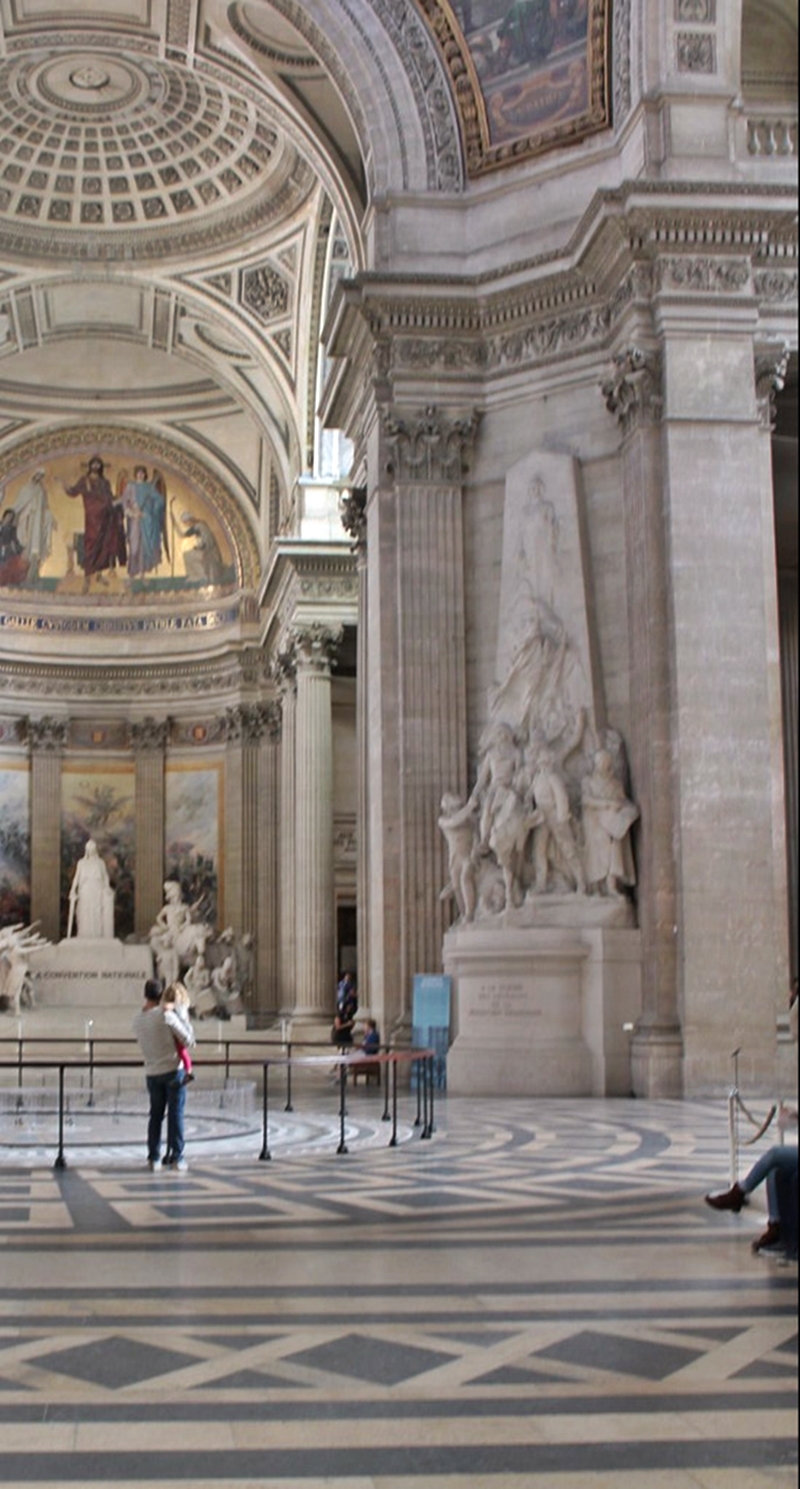


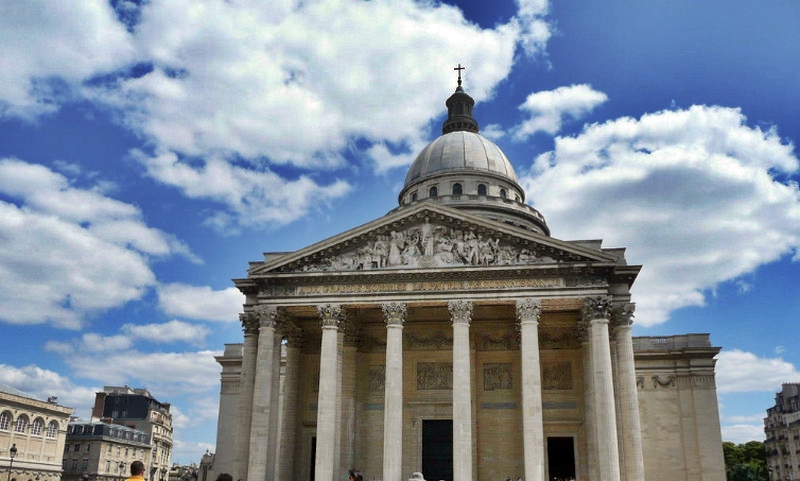
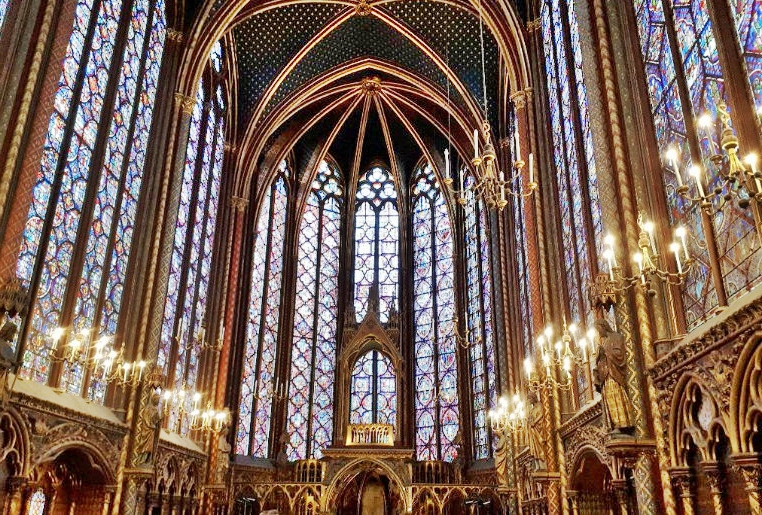
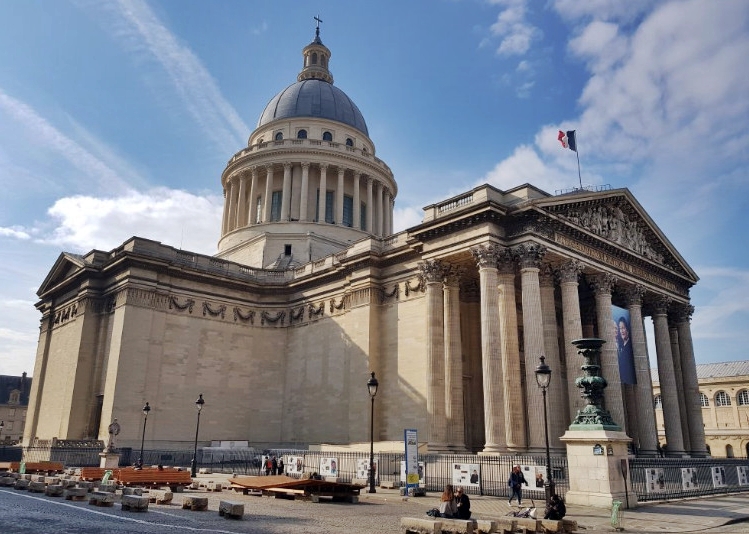
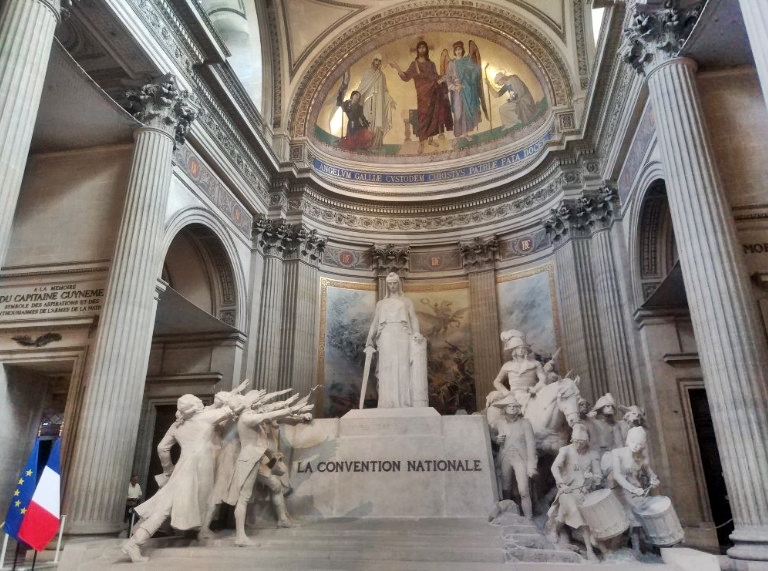
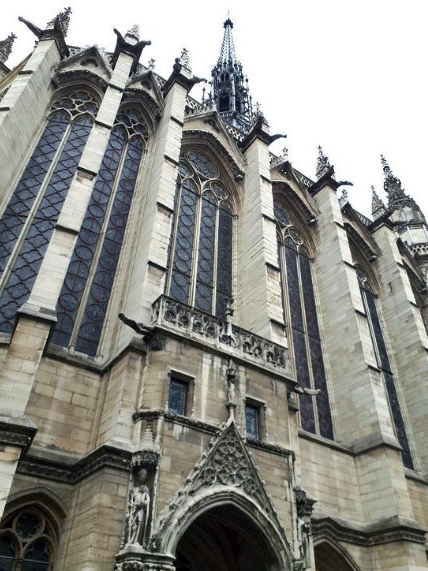
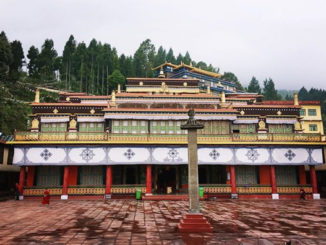
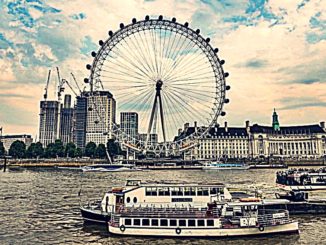
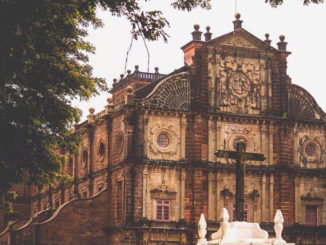
Be the first to comment